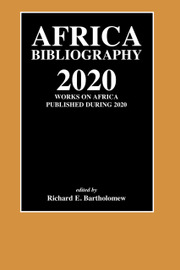Article contents
Documenting Kano ‘Market’ Literature
Published online by Cambridge University Press: 16 March 2011
Extract
From the earliest period of the production of printed Roman script books in the north of Nigeria, a primary concern was the economics of book production. The conundrum was how to break out of the ‘chicken and egg situation’ whereby it was not possible to ‘create’ a reading public unless there were sufficient, affordable, and readable books that a potential reader would want to read; on the other hand, without an existing commercial market for books, how could any publisher continue to publish? (East 1943). The main government-funded agency, the Northern Region Literature Agency (NORLA), that undertook the publication of the overwhelming majority of Hausa language books in the 1950s (Skinner 1970), was forced to close when its losses became unsustainable.
- Type
- Introduction
- Information
- Africa Bibliography , Volume 1998: Africa Bibliography 1998 Works on Africa Published during 1998 , March 2000 , pp. vii - xxiii
- Copyright
- Copyright © International African Institute 2000
References
- 4
- Cited by




